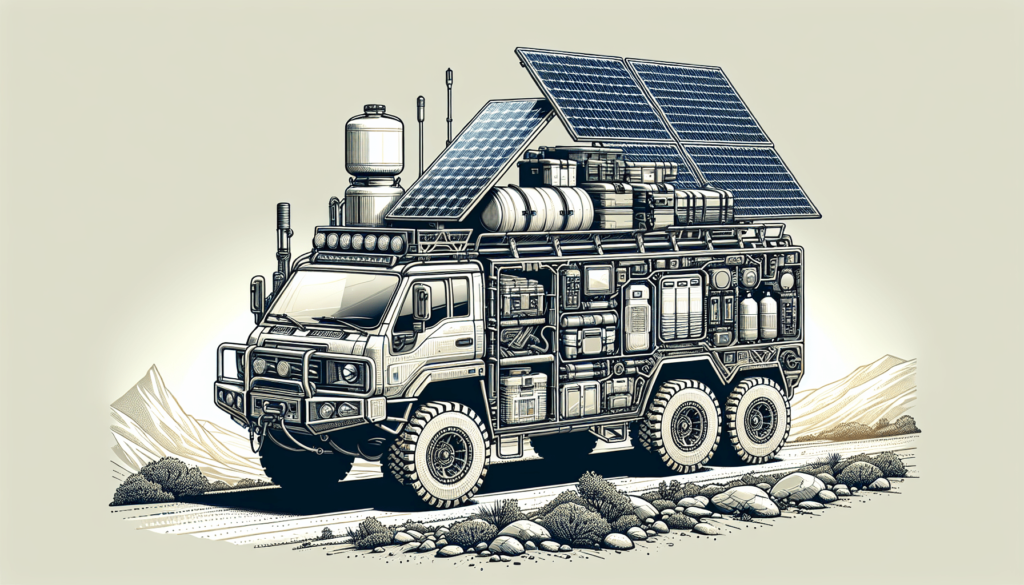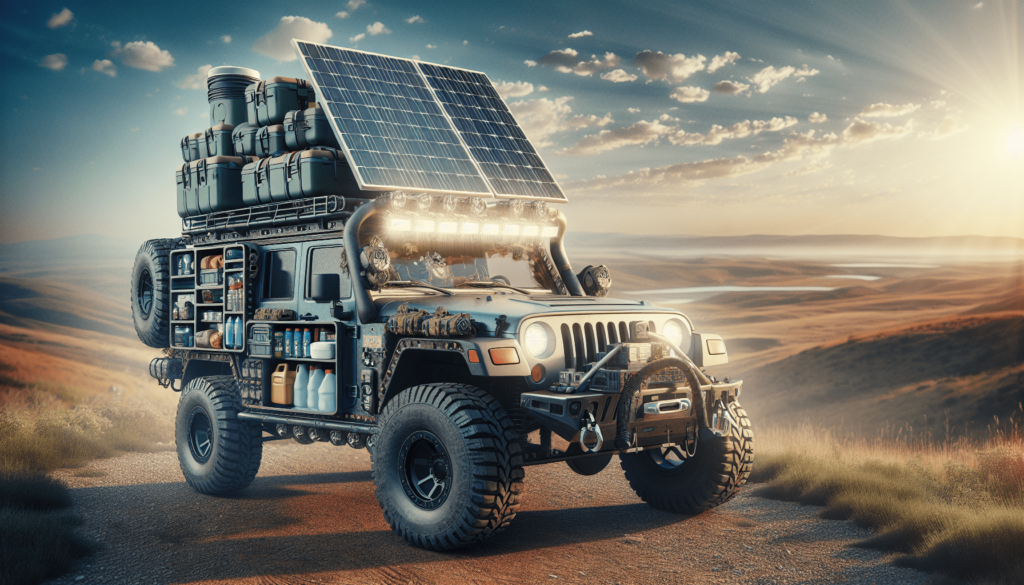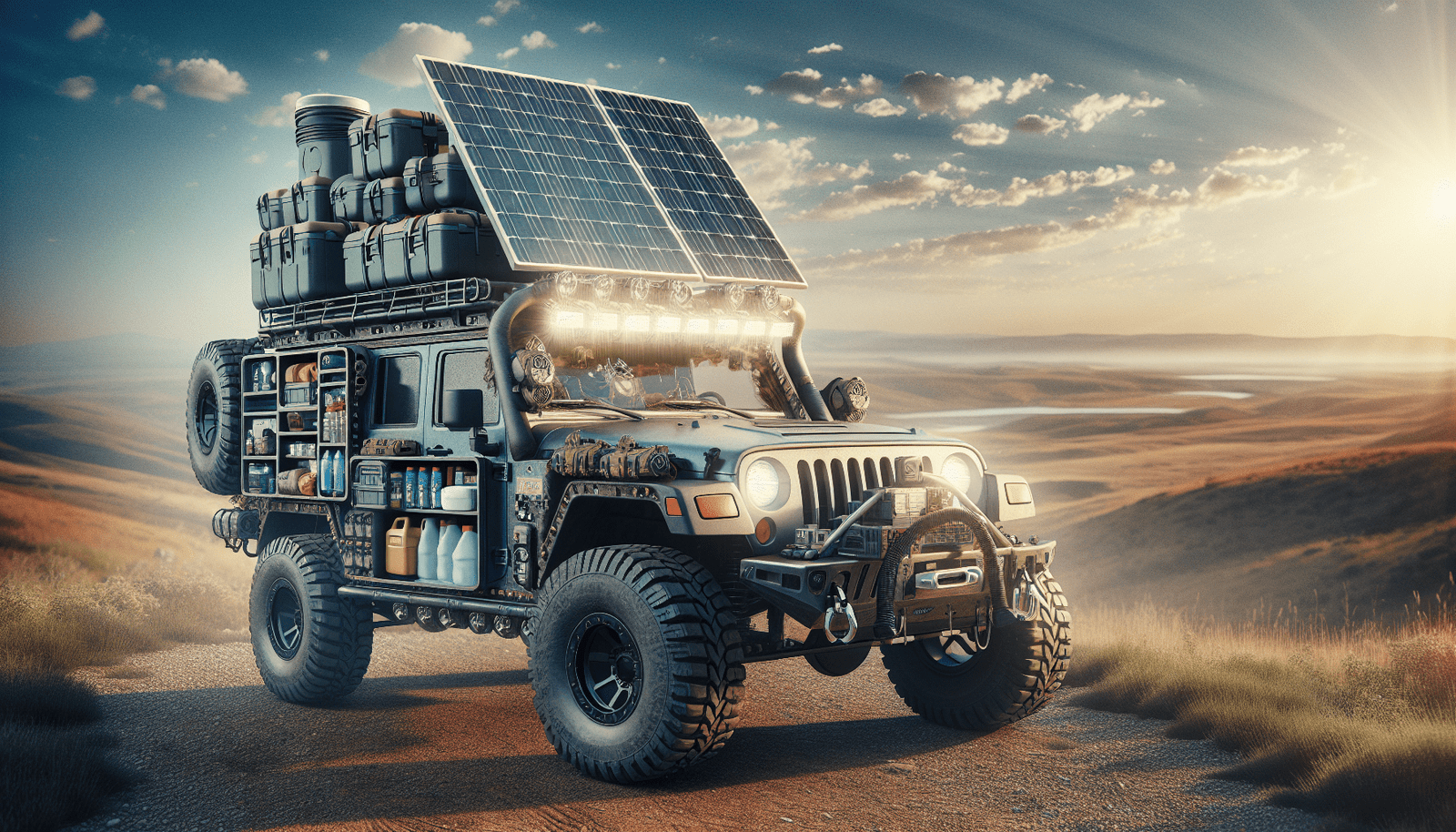Are you an adventurous soul yearning for thrilling expeditions that last for days on end? Look no further, for in this article, we will shed light on the question that’s been burning in your mind: how can you make your vehicle self-sufficient for those epic long journeys? Whether you’re planning a cross-country road trip or an off-roading adventure in the wilderness, we’ve got you covered with practical tips and innovative ideas to ensure your vehicle becomes your reliable companion, equipped with everything you need to go the distance. From a robust power source to ingenious storage solutions, prepare to transform your vehicle into the ultimate self-sufficient expedition machine. Get ready to conquer the unknown and embark on the journey of a lifetime!
1. Fuel Efficiency
When embarking on long expeditions, one of the key concerns is fuel efficiency. By taking a few simple steps, you can enhance your vehicle’s fuel efficiency and extend your reach. First and foremost, consider upgrading to a more fuel-efficient vehicle if possible. Newer models often come equipped with improved technology that maximizes fuel economy. Another simple way to increase fuel efficiency is by maintaining proper tire pressure. Underinflated tires can decrease mileage and increase fuel consumption. Regularly checking and inflating your tires to the recommended pressure can make a significant difference. Additionally, reducing vehicle weight by removing unnecessary items can also enhance fuel efficiency. Consider decluttering your vehicle and only carrying essential gear. Lastly, when driving on highways, using cruise control can help maintain a consistent speed and optimize fuel usage. By implementing these measures, you can make your vehicle more fuel-efficient, allowing you to travel further on each tank of gas.
2. Water Storage and Filtration
Access to clean water is vital during long expeditions, especially when venturing into remote areas. To ensure self-sufficiency, it’s essential to have a reliable water storage and filtration system. Installing a water storage system in your vehicle will provide you with a steady supply of water. These systems are designed to be compact and efficient, allowing you to carry a sufficient amount of water for your journey. Additionally, using water filtration systems will allow you to purify water from various sources, including rivers and lakes, making it safe for drinking and cooking. It’s also advisable to carry water purification tablets as a backup method. Furthermore, collecting rainwater can be a valuable resource during emergencies or when other water sources are scarce. By integrating these strategies, you can ensure a continuous and safe water supply throughout your expedition.

3. Food Storage and Preparation
Proper food storage and preparation are essential for sustaining oneself during long expeditions. Investing in a portable refrigerator or cooler can greatly extend the shelf life of perishable food items. These refrigeration solutions are designed to operate on 12-volt DC power, ensuring your food stays fresh and safe to consume. However, it’s also crucial to pack non-perishable food items that do not require refrigeration. Items such as canned goods, energy bars, and dried fruits can be conveniently stored and provide sustenance without relying on refrigeration. Additionally, consider incorporating dehydrated or freeze-dried meals into your menu plan. These lightweight and compact meals are easy to prepare and can be rehydrated using boiled water or other liquid sources. Don’t forget to carry cooking utensils and a camp stove, as these will be necessary for preparing your meals on the go. With these provisions in place, you can enjoy nutritious and varied meals throughout your expedition.
4. Power Generation
Having a reliable power source during your expedition is crucial for charging electronic devices, running appliances, and maintaining overall comfort. Installing a solar panel system on your vehicle roof can provide a sustainable and eco-friendly source of power. Solar panels harness the sun’s energy and convert it into electricity, allowing you to charge batteries and power small appliances. Additionally, utilizing a generator or power inverter can offer a backup power source when solar energy is limited. However, it’s important to carry extra fuel for generators to ensure extended use. For portable power needs, consider using power banks, which are compact and rechargeable battery packs that can power smartphones, tablets, and other small devices. By utilizing these power generation methods, you can maintain a reliable source of power and eliminate the worry of running out of battery on your expedition.

5. Communication and Navigation
When venturing into remote areas, it’s crucial to have effective communication and navigation tools to ensure safety and prevent getting lost. Equipping your vehicle with a satellite phone or radio allows you to establish communication even in areas with no cell service. These devices provide a reliable means of communication, enabling you to stay connected and reach out for help if needed. Installing a GPS navigation system is also essential for accurate and precise direction. GPS systems provide real-time positioning and help guide you along your planned routes. It’s advisable to carry physical maps as backup, as they can come in handy if electronic devices fail or encounter technical issues. Additionally, downloading offline map apps on your phone can provide offline navigation assistance in areas with limited internet connectivity. With these communication and navigation tools in place, you can confidently explore unfamiliar territories without worrying about getting lost or being disconnected from the rest of the world.
6. Emergency Preparedness
No matter how well-prepared you are, emergencies can occur during expeditions. Being equipped with the necessary tools and supplies can make a significant difference in such situations. Carrying a well-stocked first aid kit is paramount for providing immediate medical attention in case of injuries or illnesses. It should include essentials such as bandages, antiseptics, pain relievers, and any necessary prescription medications. Additionally, having a fire extinguisher onboard is crucial for promptly extinguishing potential fires, ensuring the safety of both yourself and your vehicle. Equipping a portable air compressor allows you to address tire punctures or deflation, granting you the ability to continue your journey without delays. It’s also advisable to carry spare parts and tools specific to your vehicle model for any necessary repairs. By being prepared for emergencies, you can handle unexpected situations with confidence and ensure the safety of yourself and your companions.
7. Waste Management
Maintaining proper waste management practices is not only environmentally responsible but also essential for a comfortable expedition experience. Installing a portable toilet in your vehicle allows for hassle-free and hygienic waste disposal. These toilets are designed to be compact, easy to use, and eliminate the need for finding public restrooms in remote areas. Carrying biodegradable waste bags ensures that you can dispose of waste safely and without harming the environment. Always make sure to properly dispose of waste at designated areas or facilities to minimize any negative impact on the surroundings. Furthermore, minimizing waste generation through conscious consumption and recycling practices is essential. By adopting these waste management habits, you can promote environmental sustainability and maintain a clean, hygienic living space within your vehicle.
8. Communication with Others
Although the allure of a remote expedition lies in solitude and exploration, it’s important to have channels of communication with other individuals. Carrying a two-way radio or walkie-talkie allows you to remain connected with your travel companions, especially in areas without reliable cell service. These devices enable clear and instant communication over short distances. Additionally, joining online forums or groups dedicated to expedition enthusiasts can provide valuable tips, advice, and insights from experienced individuals. Sharing your experiences and learning from others’ expertise can enhance the overall expedition experience. Informing a trusted contact of your expedition plans is essential for safety purposes. Sharing details such as your intended routes, estimated return dates, and emergency contact information ensures someone is aware of your whereabouts and can initiate necessary actions if needed. For added security, consider utilizing a satellite tracking device, which allows friends and family to monitor your location in real-time. By prioritizing communication with others, you can maintain social connections, gain valuable knowledge, and ensure a safety net during your expeditions.
9. Vehicle Maintenance
Keeping your vehicle in optimal condition is crucial for a self-sufficient expedition. Regularly perform engine and fluid checks to identify any potential issues before they become major problems. This includes checking oil levels, coolant levels, brake fluid, and tire pressure. Staying updated on vehicle recalls ensures that any manufacturer-recommended fixes or improvements are addressed promptly. Carrying spare parts and repair tools specific to your vehicle model allows you to handle minor repairs and replacements when needed. Additionally, keeping a log of maintenance and repairs will help you track the condition of your vehicle and identify any recurring issues that require attention. By staying on top of vehicle maintenance, you can minimize the risk of breakdowns and ensure a smooth and enjoyable expedition.
10. Camping and Sleeping Arrangements
Lastly, creating comfortable and practical sleeping arrangements is essential for rest and rejuvenation during long expeditions. Investing in a rooftop tent or camping gear allows you to set up a cozy sleeping area on top of your vehicle. These tents are designed to be durable, weather-resistant, and easy to set up, providing a convenient solution for overnight stays. For a lightweight and portable sleeping option, consider using a camping hammock. Hammocks are compact, easy to pack, and offer a comfortable and elevated sleeping position. Additionally, carrying sleeping bags and blankets ensures you stay warm and comfortable regardless of the weather conditions. Finally, consider utilizing portable power options for lighting at night. Portable LED lights or lanterns powered by rechargeable batteries or solar energy provide ample illumination inside and around your campsite. By investing in these camping and sleeping arrangements, you can create a cozy and practical resting space, promoting a good night’s sleep and ensuring you’re ready to tackle the day’s adventures.
In conclusion, making your vehicle self-sufficient for long expeditions involves a comprehensive approach that covers various aspects of your journey. From enhancing fuel efficiency and ensuring a reliable water supply to prioritizing communication, emergency preparedness, waste management, and vehicle maintenance, each of these components contributes to an enjoyable, safe, and sustainable expedition experience. By implementing the strategies and tips discussed, you can embark on your expeditions with confidence, knowing that you have the necessary tools, resources, and knowledge to navigate any challenges that may come your way. So gear up, follow these guidelines, and get ready to embark on unforgettable adventures, exploring the uncharted territories with your self-sufficient vehicle!

